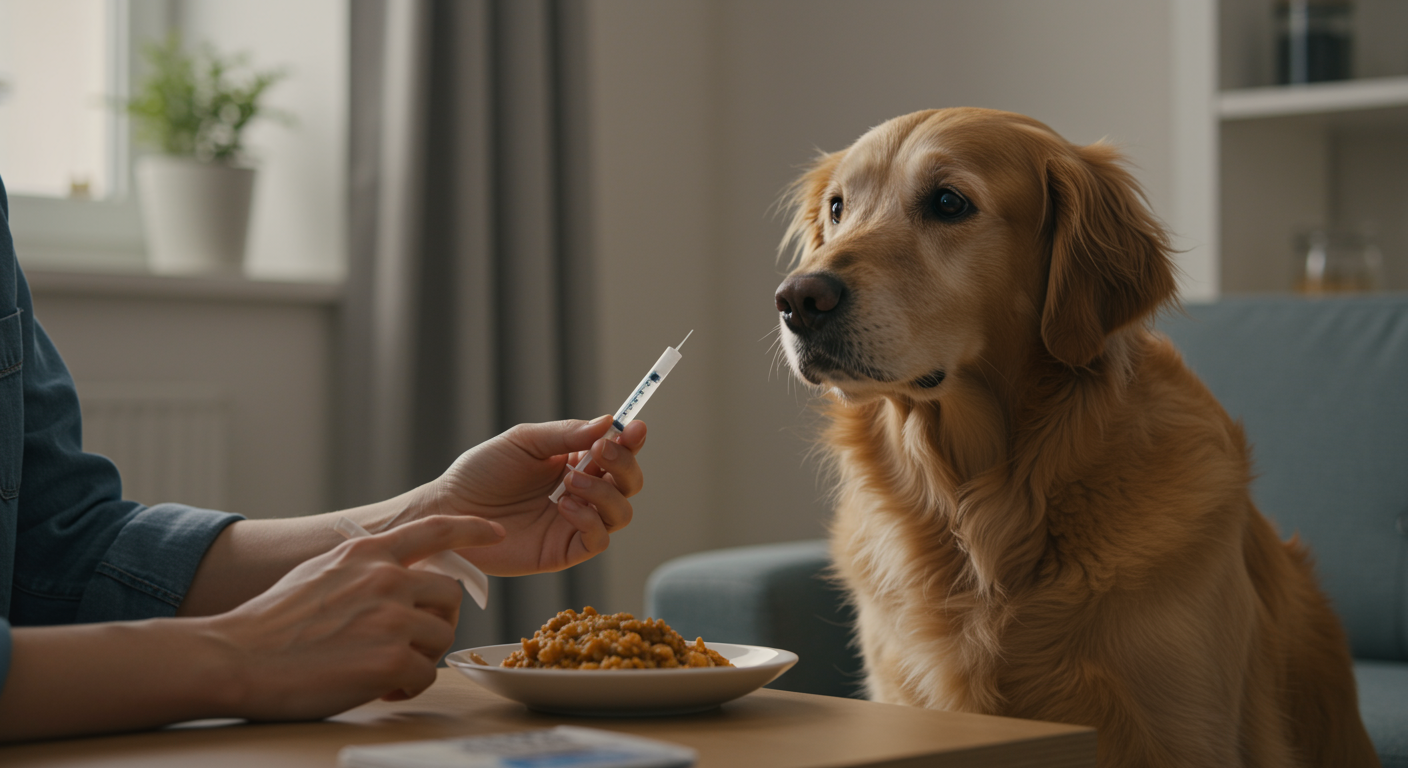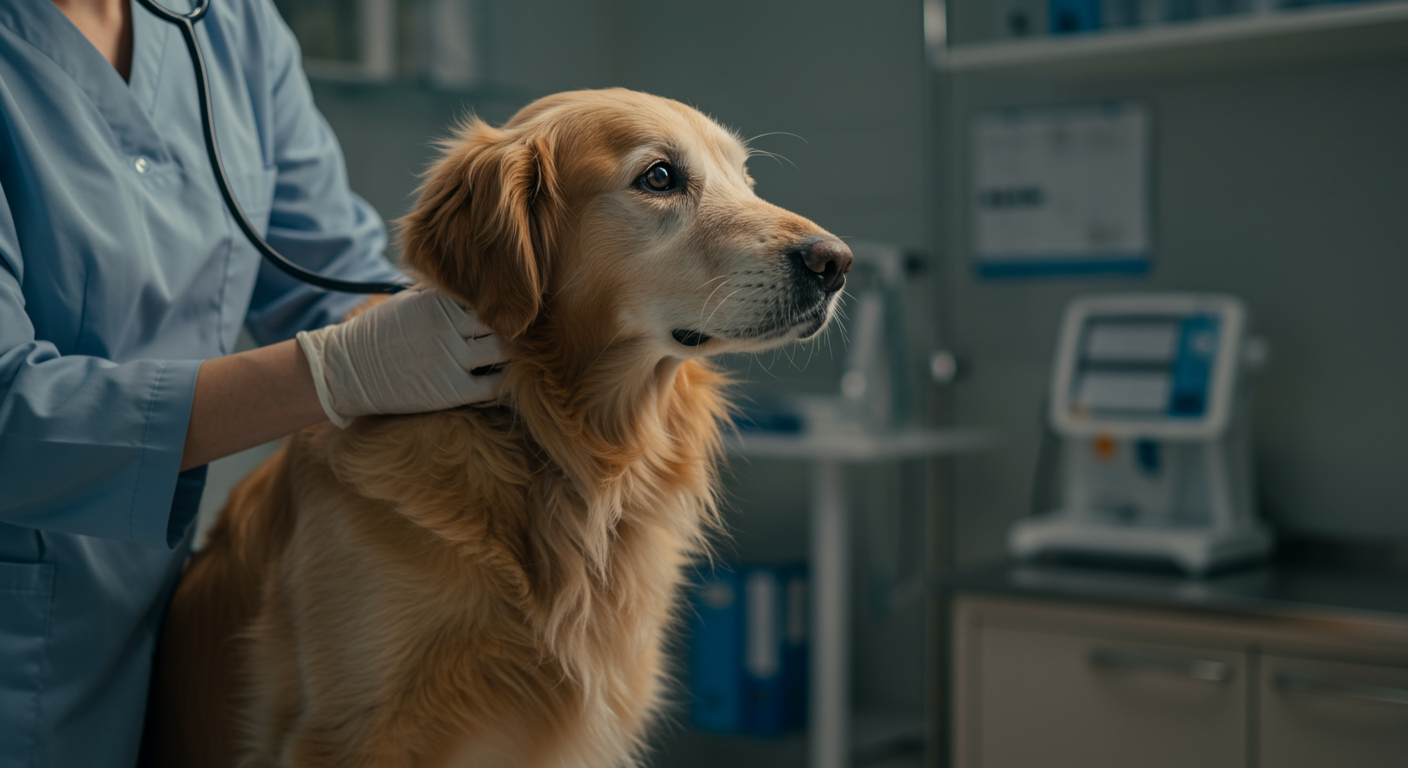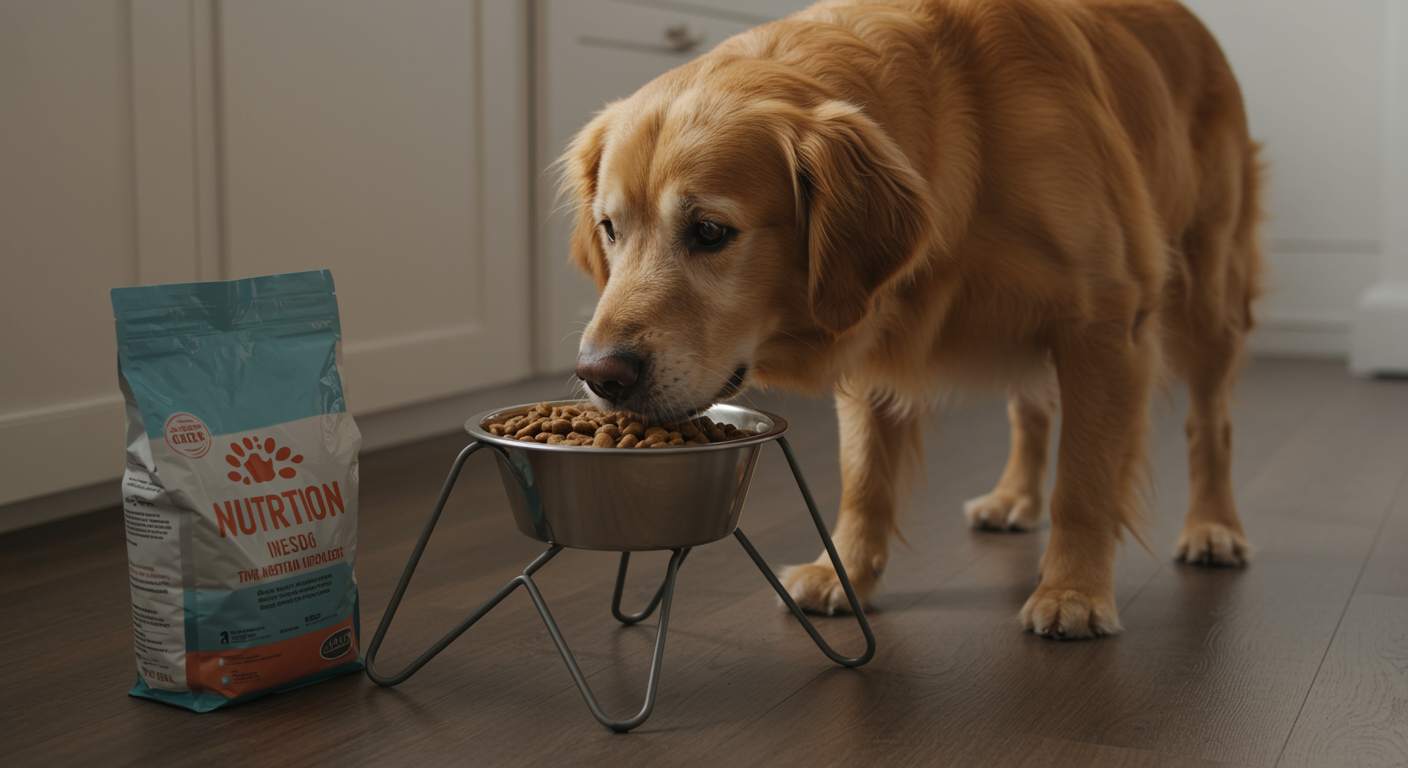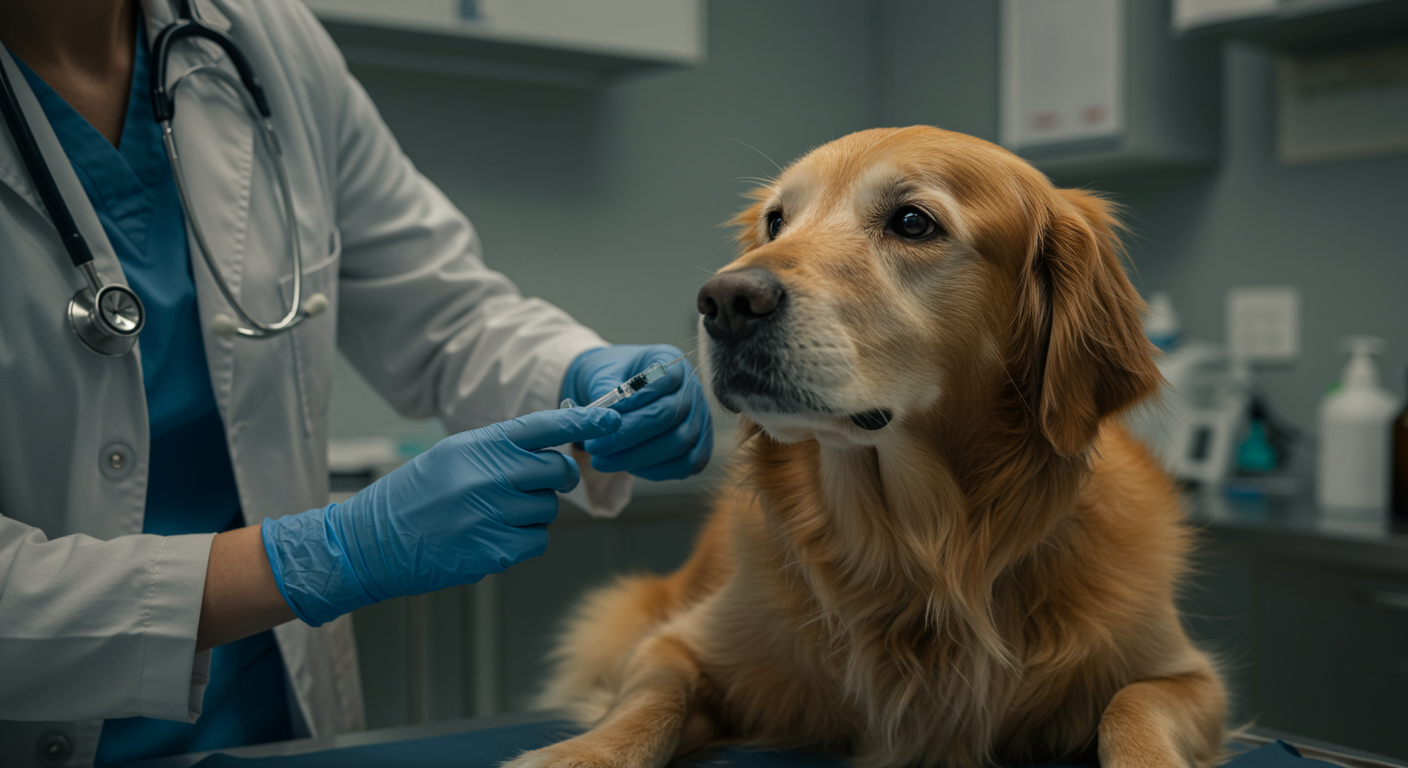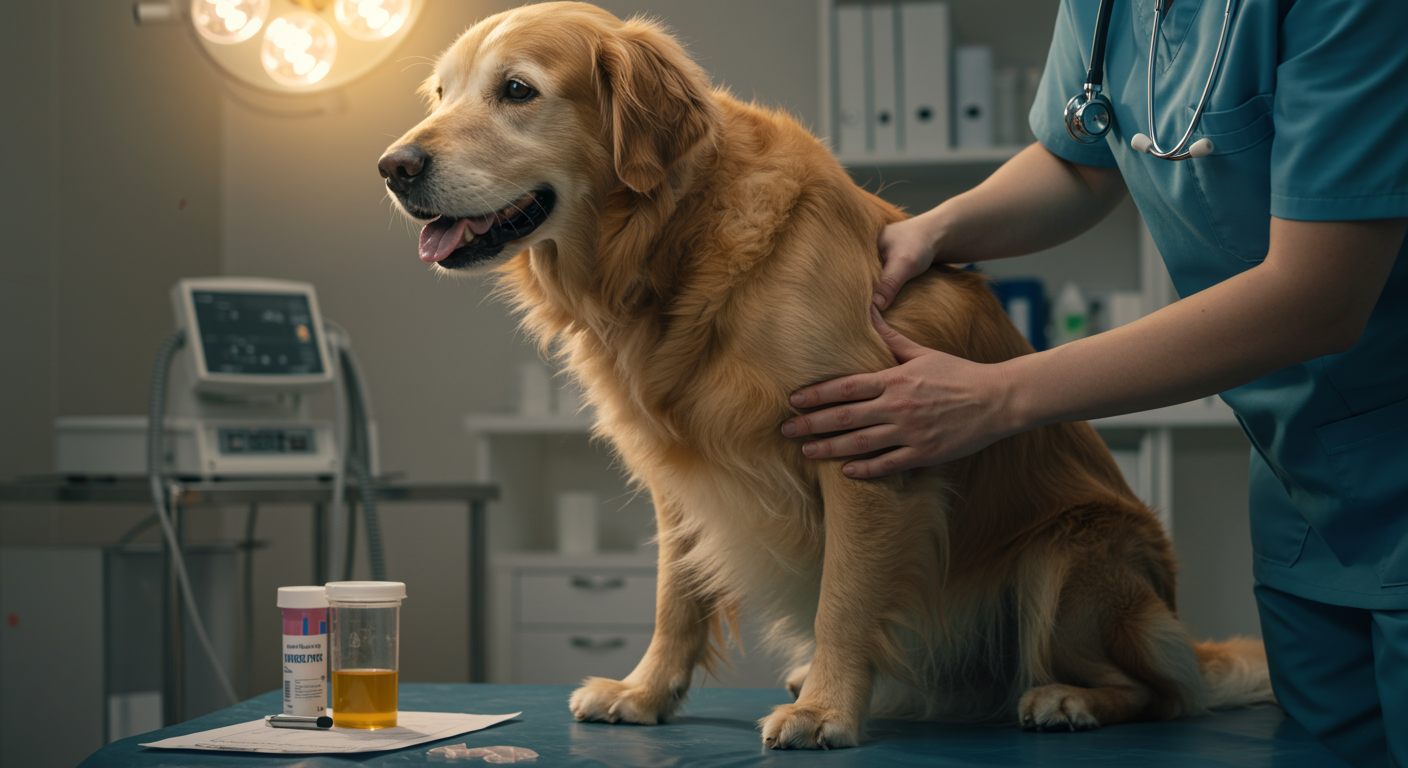Diabetes mellitus is a chronic and complex metabolic disorder that significantly impacts the health and quality of life of senior Golden Retrievers, requiring dedicated care, consistent management, and proactive monitoring. As these beloved companions age, their susceptibility to developing diabetes increases, often complicating existing age-related conditions such as arthritis or heart disease. Effective management of diabetes in senior Golden Retrievers involves a multifaceted approach that encompasses dietary modifications, insulin therapy, regular veterinary oversight, and careful attention to daily routines.
The diagnosis of diabetes in a senior Golden Retriever can initially feel overwhelming for owners, but with proper education and a strong partnership with their veterinary team, most diabetic dogs can live full, active, and comfortable lives. The challenges unique to senior diabetic dogs include managing concurrent health issues, potential changes in insulin requirements, and the need for meticulous monitoring to prevent complications such as hypoglycemia or diabetic ketoacidosis. Understanding these nuances is crucial for optimizing care and ensuring stable blood glucose levels.
Golden Retrievers, known for their cooperative temperament and strong bond with their families, often adapt well to the routines required for diabetes management. Their intelligence and eagerness to please make them excellent patients for daily insulin injections and dietary adjustments. The goal of special care for diabetic senior Golden Retrievers extends beyond simply controlling blood sugar; it aims to minimize the impact of diabetes on their overall well-being, prevent long-term complications, and maintain their joyful engagement with life throughout their golden years.
Understanding Diabetes Mellitus in Senior Golden Retrievers
Types of Canine Diabetes
Canine diabetes mellitus is primarily classified into two main types, with Type I being the most common in dogs.
Type I Diabetes (Insulin-Deficient): This is the predominant form in dogs, characterized by the destruction of insulin-producing cells in the pancreas. Dogs with Type I diabetes require lifelong insulin injections to regulate blood glucose levels. Golden Retrievers are more commonly affected by this type.
Type II Diabetes (Insulin-Resistant): Less common in dogs, Type II diabetes involves either insufficient insulin production or the body’s cells not responding effectively to insulin. This type is often associated with obesity and can sometimes be managed with diet and oral medications, though insulin may still be necessary.
Secondary Diabetes: Can arise due to other underlying conditions, such as Cushing’s disease, pancreatitis, or prolonged steroid use. Treating the primary condition may resolve or improve diabetes.
Age-Related Risk Factors for Diabetes
Several factors increase the risk of diabetes in senior Golden Retrievers.
Obesity: Excess weight is a significant risk factor for insulin resistance and can exacerbate diabetes. Senior dogs are prone to weight gain due to decreased metabolism and activity.
Pancreatitis: Inflammation of the pancreas can damage insulin-producing cells, leading to diabetes. Senior dogs may be more susceptible to chronic pancreatitis.
Cushing’s Disease (Hyperadrenocorticism): Excess cortisol production interferes with insulin’s action, causing insulin resistance and often leading to diabetes. This condition is more prevalent in senior dogs.
Steroid Medications: Long-term use of corticosteroids, often prescribed for conditions like arthritis or allergies, can induce or worsen diabetes by increasing blood glucose levels.
Genetics: While not as strong as in some other breeds, individual genetic predispositions within Golden Retriever lines can increase susceptibility.
| Risk Factor | Impact on Diabetes | Prevention/Management Strategy |
|---|---|---|
| Obesity | Insulin resistance, exacerbated symptoms | Weight management, balanced diet, exercise |
| Pancreatitis | Pancreatic damage, reduced insulin | Low-fat diet, proper medical management |
| Cushing’s Disease | Increased cortisol, insulin resistance | Diagnosis and treatment of Cushing’s |
| Steroid Use | Elevated blood glucose, induced diabetes | Judicious steroid use, alternative therapies |
| Genetics | Increased susceptibility | Responsible breeding, early monitoring |
Recognizing Signs of Diabetes in Senior Golden Retrievers
Early Clinical Signs (The “4 Ps”)
The classic signs of diabetes in dogs, often referred to as the “4 Ps,” are crucial for early detection in senior Golden Retrievers.
- Polyuria (Increased Urination): Diabetic dogs produce large volumes of urine because excess glucose in the blood is filtered by the kidneys, drawing water with it. Owners may notice more frequent urination, larger urine puddles, or accidents in the house.
- Polydipsia (Increased Thirst): Due to fluid loss from excessive urination, diabetic dogs become very thirsty and drink more water than usual. This is a compensatory mechanism to prevent dehydration.
- Polyphagia (Increased Appetite): Despite consuming more food, the body’s cells cannot utilize glucose for energy without insulin, leading to a feeling of constant hunger. Diabetic dogs may exhibit ravenous appetites.
- Weight Loss: Paradoxically, despite increased appetite, diabetic dogs often lose weight because their bodies cannot efficiently convert food into usable energy. They start breaking down fat and muscle for fuel.
Other Important Symptoms
- Lethargy and Weakness: Lack of usable energy in cells leads to a general feeling of tiredness and reduced activity levels.
- Vomiting: Can occur due to metabolic imbalances, especially if diabetic ketoacidosis (DKA) is developing.
- Cataracts: Rapid development of cataracts (clouding of the eye lens) is a common and often hallmark sign of diabetes in Golden Retrievers.
- Urinary Tract Infections (UTIs): High glucose levels in the urine create a favorable environment for bacterial growth, making UTIs common in diabetic dogs.
- Poor Coat Condition: A dull, dry, or unhealthy coat can be a sign of underlying metabolic imbalance.
Diagnosing Diabetes in Senior Golden Retrievers
Veterinary Diagnostic Procedures
Diagnosis of diabetes involves a combination of clinical signs, physical examination, and laboratory tests.
Physical Examination: A veterinarian will assess the dog’s overall condition, including weight, hydration status, and presence of cataracts. They may also check for signs of concurrent conditions.
Blood Glucose Test: Persistently elevated blood glucose levels (hyperglycemia) are the primary indicator of diabetes. A single high reading might be due to stress, so multiple readings or additional tests are often needed.
Urine Glucose Test: The presence of glucose in the urine (glucosuria) confirms that blood glucose levels have exceeded the kidney’s reabsorption threshold, a strong indicator of diabetes. Ketones in the urine indicate a more severe, potentially life-threatening condition (DKA).
Fructosamine Test: This blood test measures the average blood glucose concentration over the preceding 1-3 weeks. It is less affected by stress-induced hyperglycemia and provides a more accurate picture of long-term glucose control.
Additional Tests: A complete blood count, chemistry panel, and urinalysis are typically performed to assess overall health, check for concurrent infections (like UTIs), and evaluate organ function (kidney, liver).
| Diagnostic Test | What It Measures | Indication for Senior Diabetics |
|---|---|---|
| Blood Glucose | Current blood sugar level | Primary diagnosis, daily monitoring |
| Urine Glucose/Ketones | Glucose/ketones in urine | Diagnosis confirmation, DKA risk |
| Fructosamine | Average blood glucose (1-3 weeks) | Long-term control, stress-free reading |
| CBC/Chemistry Panel | Organ function, electrolytes | Concurrent conditions, overall health |
| Urinalysis | UTIs, kidney function | Infection detection, kidney impact |
Comprehensive Management for Diabetic Seniors
Insulin Therapy: The Cornerstone of Treatment
Insulin Types: The veterinarian will prescribe a specific type of insulin (e.g., Vetsulin/Caninsulin, Novolin, Humulin) and dosage based on the dog’s weight, blood glucose levels, and individual response.
- Administration: Insulin is given via subcutaneous injection, usually twice daily, approximately 12 hours apart, after meals. Owners are taught how to draw up and administer the injections safely.
- Storage: Insulin must be stored in the refrigerator and handled carefully to maintain potency.
Dosage Adjustment: Insulin dosage is highly individualized and requires careful adjustment based on glucose curves, fructosamine levels, and the dog’s clinical signs. Never adjust insulin doses without veterinary guidance.
Dietary Management: A Critical Component
High Fiber, Complex Carbohydrates: Diabetic diets typically focus on high fiber and complex carbohydrates to promote slow glucose absorption and prevent rapid spikes in blood sugar. Fiber also aids in satiety and weight management.
- Protein Levels: Adequate, high-quality protein is essential for maintaining muscle mass in senior dogs.
- Fat Content: Moderate fat levels are usually recommended, especially if there’s a history of pancreatitis.
Consistency is Key:
- Fixed Feeding Schedule: Meals should be given at consistent times each day, synchronized with insulin injections.
- Consistent Food Type and Amount: Sudden changes in diet can drastically affect blood glucose levels. If a change is necessary, it must be done gradually under veterinary supervision.
- Treat Management: Treats should be limited and carefully chosen, opting for low-calorie, high-fiber options. They must be factored into the overall caloric intake.
Exercise and Activity Balance
Moderate and Consistent: Regular, moderate exercise is beneficial for blood glucose control and overall well-being in senior diabetic dogs. However, intense or erratic exercise can cause dangerous fluctuations in blood sugar.
- Schedule: Exercise should be consistent daily, preferably at the same time each day, after insulin and meals.
- Monitoring: Closely monitor your dog for signs of hypoglycemia during and after exercise, as physical activity can lower blood sugar.
Avoiding Extremes: Avoid strenuous exercise, especially during peak insulin activity. Always carry a sugar source (e.g., corn syrup, honey) when exercising your diabetic dog.
Daily Monitoring and Routine
Home Glucose Monitoring
Glucometers: Many owners opt to monitor blood glucose at home using pet-specific glucometers (e.g., AlphaTrak) or human glucometers adapted for canine use. Blood is typically drawn from a small prick on the ear, lip, or paw pad.
- Glucose Curves: A glucose curve involves taking blood glucose readings every 1-2 hours over a 12-24 hour period to see how insulin affects blood sugar throughout the day. This helps veterinarians fine-tune insulin doses.
Urine Strips (Limited Use): Urine glucose strips can indicate the presence of glucose or ketones but do not provide exact blood glucose levels. They are primarily useful for detecting high glucose (and ketones) and are not recommended for routine insulin adjustment.
Observational Monitoring Checklist
| Observation Point | Daily Check | Weekly Check | Monthly Check | Action if Issue |
|---|---|---|---|---|
| Appetite | Eating full meal? | Consistent intake | No long-term changes | Contact vet if significant change |
| Thirst | Normal drinking amount | No excessive drinking | Consistent over time | Monitor, contact vet |
| Urination | Normal frequency/volume | No increase in accidents | Consistent patterns | Vet visit for UTIs/accidents |
| Energy Level | Alert, active | No lethargy or weakness | Stable | Contact vet (hypoglycemia risk) |
| Insulin Administration | Correct dose, injection site | No missed doses | Consistency | Immediately contact vet if missed |
| Weight | Stable | Consistent | No long-term gain/loss | Contact vet for diet adjustment |
| Coat/Skin | Healthy, no dry spots | No new issues | Condition maintained | Vet visit for skin problems |
| Behavior | Normal, no anxiety/restlessness | Consistent | Stable | Vet if sudden changes |
Record Keeping: Meticulous records of insulin dose, injection time, meal times, food amounts, water intake, urination frequency, and any observed clinical signs are vital for effective management. This data helps the veterinarian make informed adjustments.
Recognizing Hypoglycemia (Low Blood Sugar)
Hypoglycemia is a dangerous complication of insulin therapy and requires immediate action.
Signs of Hypoglycemia:
- Weakness, lethargy.
- Drunken gait, disorientation.
- Muscle tremors or twitching.
- Seizures.
- Unconsciousness.
Emergency Response: If hypoglycemia is suspected, immediately rub corn syrup, honey, or maple syrup on the dog’s gums. Contact your veterinarian immediately, even if the dog seems to recover, as rebound hypoglycemia can occur.
Preventing and Managing Complications
Long-Term Health Monitoring
Diabetic senior Golden Retrievers require ongoing veterinary oversight to monitor diabetes control and prevent long-term complications.
Regular Veterinary Check-ups: Schedule check-ups every 3-6 months, or more frequently if needed, to assess overall health, adjust insulin, and screen for complications.
Fructosamine Tests: These tests are typically performed during check-ups to assess average blood glucose control over weeks, providing a more reliable indicator than spot checks.
Urinalysis and Culture: Frequent screening for urinary tract infections (UTIs) is crucial, as diabetic dogs are prone to UTIs that can lead to kidney issues.
Blood Work: Periodic CBC and chemistry panels monitor organ function and detect any emerging issues or electrolyte imbalances.
Managing Concurrent Conditions
Diabetes in senior Golden Retrievers often coexists with other age-related conditions.
- Arthritis: Pain from arthritis can make exercise difficult, affecting glucose control. Pain management needs to be carefully integrated.
- Cataracts: While often present at diagnosis, diabetic cataracts can progress to blindness, requiring adaptation strategies for visually impaired dogs.
- Cushing’s Disease: If present, Cushing’s must be managed alongside diabetes, as treatment for one impacts the other.
- Kidney Disease: Diabetes can contribute to kidney damage, necessitating close monitoring of kidney function and potentially specialized diets.
- Heart Disease: Diabetes can worsen heart conditions, requiring a coordinated approach to managing both diseases.
Owner Responsibilities and Support
Education and Training
Understanding Diabetes: Owners must have a thorough understanding of diabetes, including insulin action, dietary requirements, monitoring techniques, and complication recognition.
Injection Training: Proper training on insulin administration is essential for safe and effective daily care.
Emergency Preparedness: Knowing how to respond to hypoglycemia or other diabetic emergencies is crucial.
Communication Skills: Maintaining open and clear communication with the veterinary team is key to successful long-term management.
Building a Support Network
Veterinary Team: Establish a strong partnership with your primary veterinarian and consider consulting with a veterinary internal medicine specialist for complex cases.
Pet Sitters/Boarders: Ensure any temporary caregivers are fully trained in diabetic care protocols. Provide detailed written instructions and emergency contacts.
Family Involvement: All family members should be aware of the dog’s condition, daily routine, and emergency procedures.
Online Communities: Connecting with online support groups for owners of diabetic dogs can provide emotional support and practical tips.
Financial and Time Commitment
Ongoing Costs: Diabetes management involves recurring costs for insulin, syringes, glucometers, specialized food, and frequent veterinary visits. Pet insurance can help manage some of these expenses.
Daily Routine: The daily routine of insulin injections and consistent feeding requires a significant time commitment and discipline.
Patience and Dedication: Managing diabetes is a lifelong commitment that requires patience, dedication, and a consistent approach to ensure the best possible quality of life for your senior Golden Retriever.
Living a Full Life with Diabetes
A diagnosis of diabetes in a senior Golden Retriever is not a death sentence; with diligent care, consistent management, and a strong partnership with your veterinary team, these dogs can continue to live fulfilling, comfortable, and active lives for many years. The key to success lies in understanding their unique needs and committing to the daily routine and monitoring required.
The journey of managing diabetes often deepens the bond between Golden Retrievers and their owners. The daily acts of care, from insulin injections to carefully measured meals, become rituals of love that reinforce the unique connection shared. Many owners find a profound sense of purpose and fulfillment in providing the dedicated care their diabetic companions require, watching them thrive despite their chronic condition.
Success in managing diabetes is measured not just in stable blood glucose levels, but in the dog’s overall happiness, energy, and continued enjoyment of life’s simple pleasures. When properly managed, a senior diabetic Golden Retriever can continue to greet you with a wagging tail, enjoy gentle walks, engage in puzzle games, and offer the same unconditional love that defines their breed.
Your commitment to providing special care for your diabetic senior Golden Retriever demonstrates an extraordinary level of love and dedication. Through consistent daily management, vigilant monitoring, and proactive prevention of complications, you ensure that diabetes becomes a manageable aspect of their golden years, allowing them to continue living a life filled with comfort, dignity, and the enduring joy of your companionship.

Rafael Souza is a digital marketing strategist and lifelong dog enthusiast. Passionate about Golden Retrievers, he shares practical, research-based tips to help owners provide healthier and happier lives for their furry companions.

